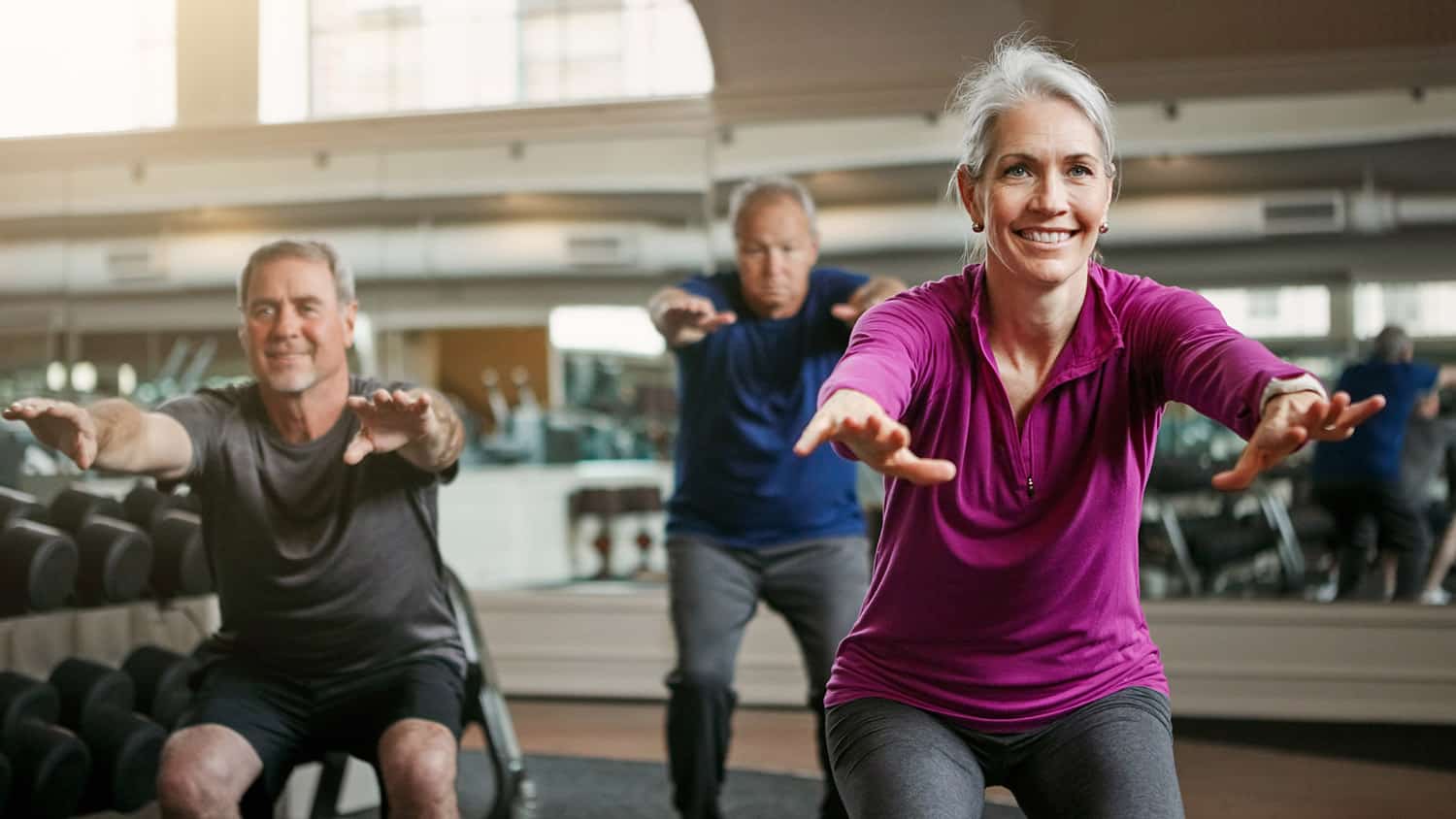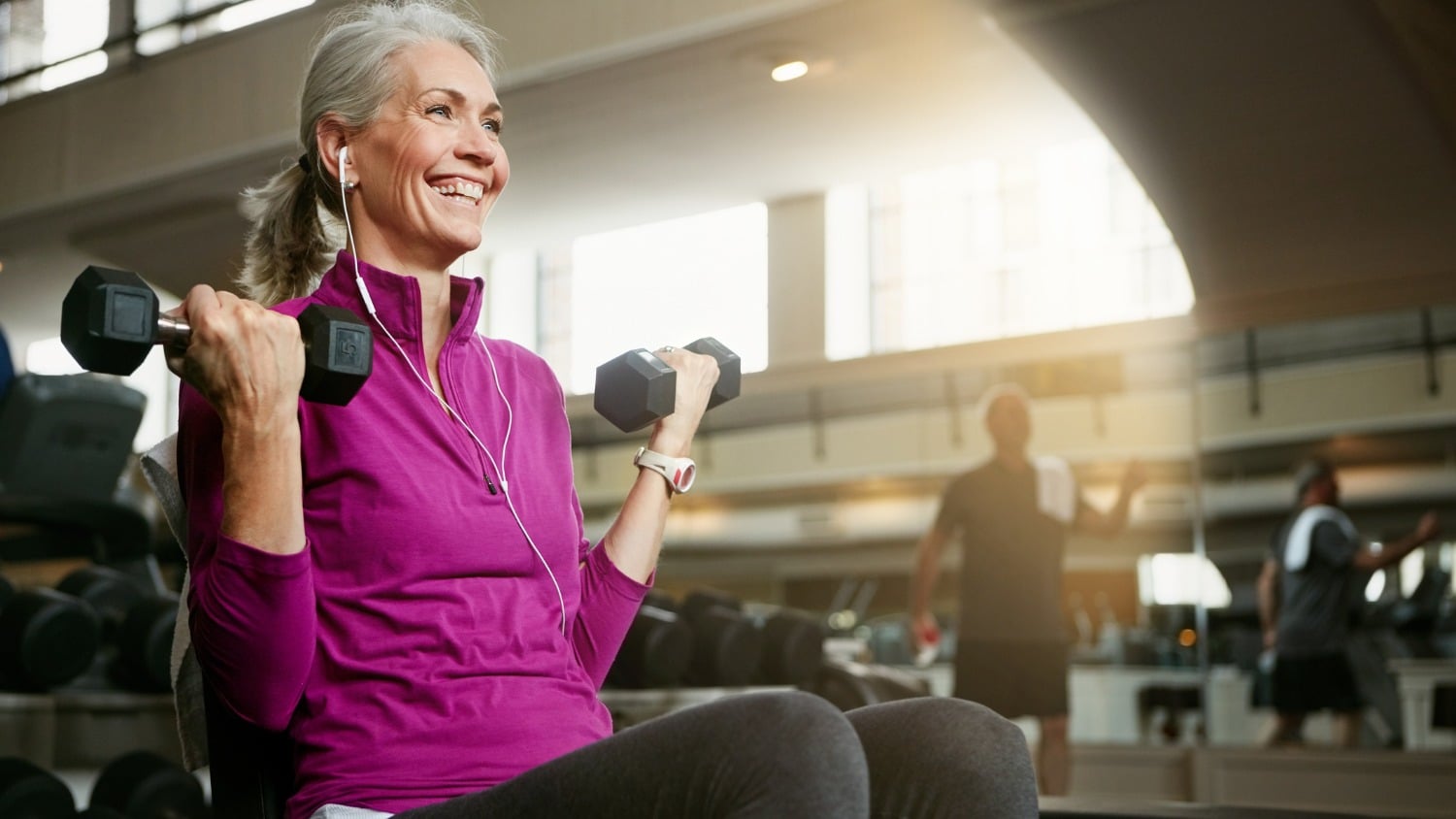
The Squat – Can You Do It After 60?
All over the world, the squat is used by countless people in pursuit of their health, fitness, and wellbeing.
It is sometimes referred to as “The King of Exercises” for being a discipline that – particularly if you’re in a hurry and have limited time – not only works your legs, buttocks, and lower back, but stimulates the rest of your body too. Consequently, it is also sometimes termed “Metabolic Accelerator.”
Barring clinically diagnosed orthopaedic or medical factors revealing it to be unsuitable, the squat is an excellent bone density developer, so putting it into your Osteoporosis wellbeing routine is a wise measure.
The guidelines in this article are the safety barriers that will protect you. However, we are all uniquely different biomechanical units, so there may be additional fine adjustments within those guidelines that can render the squat even more beneficial for you.
Wherever you are in the world, you’ll need to get your personal Biomechanics analysed to make that extra level of benefit possible.
The Right and Wrong Way
The Squat is, unfortunately, an exercise that is regularly and often performed “the wrong way,” leading to negative consequences to the knees in particular. These consequences do not set immediately but happen covertly underneath the surface.
This kind of “sub clinical micro trauma” builds up under your awareness, to the point of imminent pain. The continuous performance of such squatting can make your knees feel miserable, and down the line cause damage that can only be reversed surgically.
The Internet is teeming with squatting advice that loudly and clearly indicates poor knowledge in Exercise Biomechanics, so tread carefully among the legions of “advisory” videos out there.
With the highly significant male and female biomechanical differences at play, it’s wise to ensure that ladies perform female friendly squats, done within their gender biomechanical channels.
If you take this approach, it’s a pretty certain bet that there’ll be no pains, unwelcome sudden “creaks,” or stabbing pains in the knees popping up at some point in the future.
After my half a century worth of experience in exercise practice and biomechanical analysis, I still see acclaimed institutes and accredited organisations claim they know the proper way to squat. They even post images and videos on their websites.
The problem is that many of those images do not observe some of the very basic clinical absolutes in Biomechanics, and that’s not a happy or safe situation for any mature woman who wants to keep herself in shape.
The Forces at Play
When you squat down, your knees and thighs move forward, which is the first place things can go wrong. The purpose of your kneecap (Patella) is to cushion friction at the junction of your thigh (femur) and two lower leg bones (tibia and fibula).
When the upper ends of those two bones move forward toward the kneecap as your body lowers down in a squat, the pressure in your knees increases dramatically.
Walking on level ground has your knees contend with a load equivalent to 1.5 times your body weight, and when you go up and down stairs (particularly going down) your knees deal with 2–3 times your body weight.
However, the biggest demand is when you lower yourself right down onto your haunches to pick something up off the floor or tie your shoelaces. In those cases, the pressure goes up to 4-5 times your body weight!
So, it is wise to be on high alert when it comes to applying biomechanically confirmed knee safety measures when doing squats.
The Biomechanically Safe Way to Do Squats for Ladies
There are three important factors you need to keep in mind when doing squats.
Natural Inward Movement
The first fact to understand is that ladies’ knees will tend to move inwards toward each other, much more than male knees do. So, when squatting, it’s very important to make sure that you don’t allow your knees to significantly move inwards as you go up and down.
The easiest way to address this issue is to keep your knees in line with your big toes and make sure they don’t move inwards past that point.
Forward Knee Movement
Then, you should also try to minimise your knees’ movement forward and out over your feet. Reducing this movement will also decrease pressure in your knees and allow your kneecap greater freedom to perform its anti-friction function.
Basically, you should squat with the mental picture of sitting down. This will have you tilting forward from the waist and pushing your bottom out behind you as you lower, helping you to maintain your shins in a more vertical position as you go up and down.
The more your bottom is out behind you, the less forward your shins will move, equaling to less stress on your knees.
Using the Balls of Your Feet
The third point is related to women’s natural forward tilt to the pelvis, which has you maneuver forward more onto the balls of your feet than it is safe. You will need to counter those negative forces in your squatting technique for painless results.
But how?
Try using the edge of the sink in your kitchen. Hold the edge with a palms-down grip and hang back at full arms’ length, while constantly looking straight across the room.
Keep your upper body comfortably upright with your chest pushed gently out. Now push your bottom out and then gently lower yourself down.
If you do feel yourself dominantly on the balls of your feet as you squat, then you’re simply not pushing your bottom out far enough behind you.
It’s good practice to make sure that while you keep your upper body as upright as possible as you travel up and down, it’s not to a degree that creates an excessively compressive sensation in your lower back.
Your upper body will need to tilt forward, because you’ll be pushing your bottom out behind you, but your lower back should not make you feel uncomfortable.
Speed Is Not Your Friend
The key to good progress is a nicely moderate and smoothly controlled speed, so that if someone shouted “Stop!” at any point in your up or down phase, you could stop at that level immediately without a problem.
Also, it’s a good and safe idea, as you become well-practiced in your squat technique, to lower down a little more slowly than going up. This will help you develop your strength, although going down too slowly can be excessively catabolic and break down muscle tissue instead of building it up.
If you keep your lowering speed to an absolute maximum of 5 seconds, you’ll get all the goodies and no nasties!
Happy squats, ladies!
Let’s Have a Conversation:
How often do you do squats? Have you been feeling knee or lower back pain when performing this exercise? Why do you think that is? Would you be willing to adapt a new technique that can help you exercise without the pain? Please tell us about it in the comments!
Tags Fitness Over 60







Excellent article
Thanks!
Wow, I’ve never learned this. Thanks.
This is how we do squats in our senior enhance fitness class.
This is an excellent explanation of the facts and the movement and the difference between men and women. Thank you!
I had to laugh at the title of this article. In my 70s. 60 squats, six days a week.
Learned how on Youtube. No negatives for me. Love it because I can do it anywhere, anytime.
Thanks for the tips.
It’s no laughing matter. If you have short calf and thigh muscles due to overuse without remedial recovery (ie stretching) you may not be able to squat without considerable practice. I am in my fifties. I can now toe squat with relative ease, but I’m still not so sure about squats with my feet on the floor. (I’m only doing six a day though even then.)